Fernando Garrido
ASTRA
An Extended Horizon Tactical Decision-Making for Automated Driving Based on Monte Carlo Tree Search
Apr 22, 2025Abstract:This paper introduces COR-MCTS (Conservation of Resources - Monte Carlo Tree Search), a novel tactical decision-making approach for automated driving focusing on maneuver planning over extended horizons. Traditional decision-making algorithms are often constrained by fixed planning horizons, typically up to 6 seconds for classical approaches and 3 seconds for learning-based methods limiting their adaptability in particular dynamic driving scenarios. However, planning must be done well in advance in environments such as highways, roundabouts, and exits to ensure safe and efficient maneuvers. To address this challenge, we propose a hybrid method integrating Monte Carlo Tree Search (MCTS) with our prior utility-based framework, COR-MP (Conservation of Resources Model for Maneuver Planning). This combination enables long-term, real-time decision-making, significantly enhancing the ability to plan a sequence of maneuvers over extended horizons. Through simulations across diverse driving scenarios, we demonstrate that COR-MCTS effectively improves planning robustness and decision efficiency over extended horizons.
COR-MP: Conservation of Resources Model for Maneuver Planning
Oct 25, 2024Abstract:Decision-making for automated driving remains a challenging task. For their integration into real platforms, these algorithms must guarantee passenger safety and comfort while ensuring interpretability and an appropriate computational time. To model and solve this decision-making problem, we have developed a novel approach called COR-MP (Conservation of Resources model for Maneuver Planning). This model is based on the Conservation of Resources theory, a psychological concept applied to human behavior. COR-MP is based on various driving parameters, such as comfort, safety, or energy, and provides in real-time a profit value that enables us to quantify the impact of a decision on the decision-maker. Our method has been tested and validated through closed-loop simulations using RTMaps middleware, and preliminary results have been obtained by testing COR-MP on a real vehicle.
Improving behavior profile discovery for vehicles
Sep 24, 2024

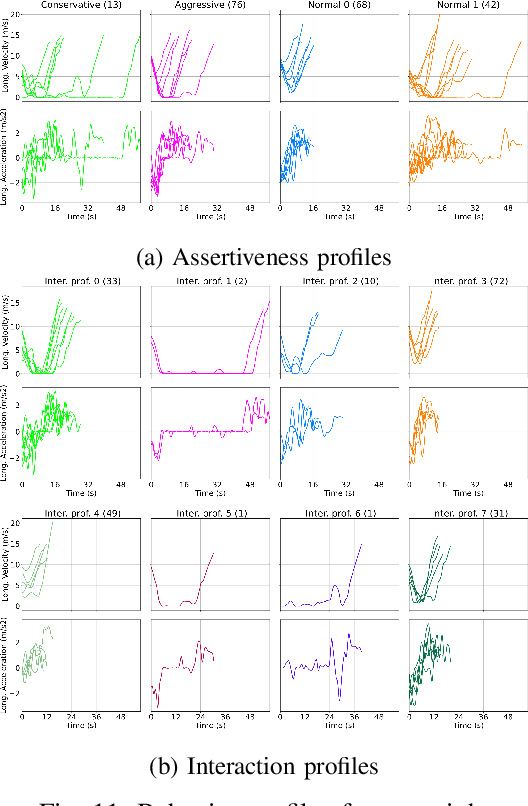
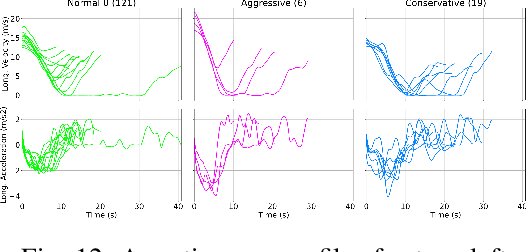
Abstract:Multiple approaches have already been proposed to mimic real driver behaviors in simulation. This article proposes a new one, based solely on the exploration of undisturbed observation of intersections. From them, the behavior profiles for each macro-maneuver will be discovered. Using the macro-maneuvers already identified in previous works, a comparison method between trajectories with different lengths using an Extended Kalman Filter (EKF) is proposed, which combined with an Expectation-Maximization (EM) inspired method, defines the different clusters that represent the behaviors observed. This is also paired with a Kullback-Liebler divergent (KL) criteria to define when the clusters need to be split or merged. Finally, the behaviors for each macro-maneuver are determined by each cluster discovered, without using any map information about the environment and being dynamically consistent with vehicle motion. By observation it becomes clear that the two main factors for driver's behavior are their assertiveness and interaction with other road users.
Fast maneuver recovery from aerial observation: trajectory clustering and outliers rejection
Jul 03, 2024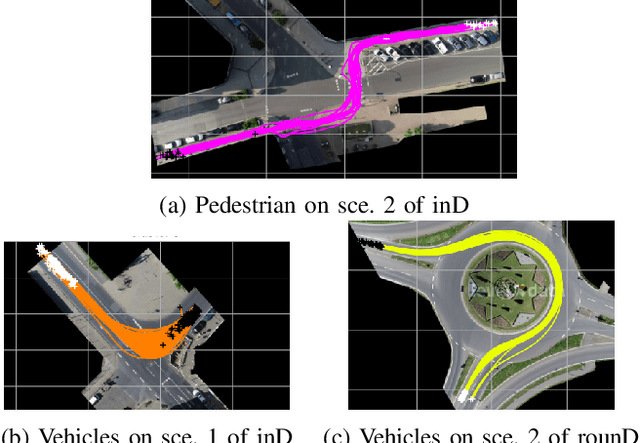
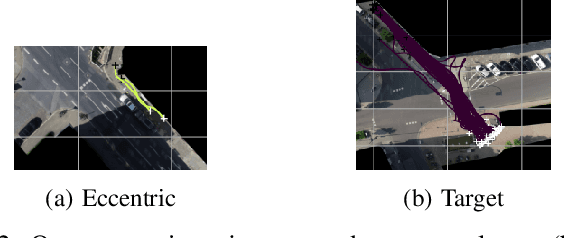

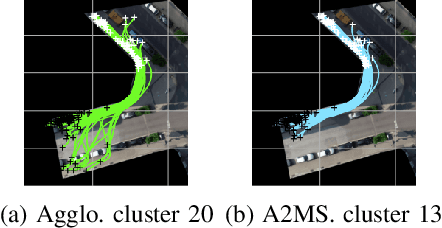
Abstract:The implementation of road user models that realistically reproduce a credible behavior in a multi-agentsimulation is still an open problem. A data-driven approach consists on to deduce behaviors that may exist in real situation to obtain different types of trajectories from a large set of observations. The data, and its classification, could then be used to train models capable to extrapolate such behavior. Cars and two different types of Vulnerable Road Users (VRU) will be considered by the trajectory clustering methods proposed: pedestrians and cyclists. The results reported here evaluate methods to extract well-defined trajectory classes from raw data without the use of map information while also separating ''eccentric'' or incomplete trajectories from the ones that are complete and representative in any scenario. Two environments will serve as test for the methods develop, three different intersections and one roundabout. The resulting clusters of trajectories can then be used for prediction or learning tasks or discarded if it is composed by outliers.
 Add to Chrome
Add to Chrome Add to Firefox
Add to Firefox Add to Edge
Add to Edge